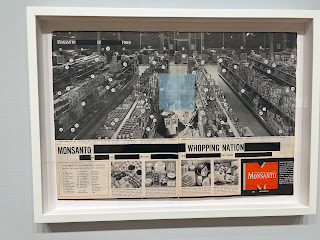Urban Heat Islands: Political or Environmental Concern?
Urban Heat Islands: Political or Environmental Concern?
By: Kyanna Gonzalez
Political ecology can be used to illustrate how social inequality is tied to power, politics, and the environment on a global scale. For example, geographic maps of the U.S city of Baltimore depict contrasting levels of heat and income depending on the region in Baltimore, MD. The maps of Baltimore suggest that lower-income households experience higher levels of heat than wealthier households. This can be shown in the maps as areas with the least amount of income generated are correlated with areas that suffer hotter surface temperatures. The surface temperature is the hottest at the center of the map and gradually decreases as you leave the center of Baltimore. One possible explanation for this increased heat at the center of Baltimore could include that this is where the urbanized city is located. Cities are more densely populated than suburban areas and could contribute to the increased surface level temperature. Cities also contain more working-class, lower-income households compared to suburban areas which could contribute to why higher-income households were depicted out of the center of the map. Economically, air conditioning can be expensive, especially in the hottest climates. Furthermore, another explanation for the discrepancies between income and surface temperature could be that lower-income households are limited financially to obtain Air conditioning compared to higher-income households. For example, the areas not in the center of the map that have the highest income also maintain a cooler surface temperature.
The video 3 Cool Ways to Cool Our Cities defines a heat island as an urbanized area that experiences higher temperatures than surrounding non-urbanized areas. Urbanized areas like cities retain more heat than suburban areas due to the man-made dark-colored infrastructures within them. For example, roads and buildings retain more of the sun’s heat energy than natural infrastructures like bodies of water and trees and contribute to how cities are hottest in surface temperature than their surrounding areas. Some solutions to combat the high surface temperatures within urbanized areas include painting the paved roads and roofs in white color to reflect heat away from the cities, constructing more green roofs, and constructing buildings that require less energy to maintain. For example, Los Angeles has launched a project to paint one-third of all paved roads in hopes to reduce the city temperature by multiple degrees celsius. While cities across the U.S are implementing small-scale solutions to combat urban heat islands, these small-scale projects are also contributing to the large-scale climate change problem by decreasing the amount of heat that radiates off the Earth's surface overall. For example, if LA paved one-third of its pavement white, it would reduce the overall temperature by one-degree celsius. Political ecology impacts the environment and its society as shown by the policies implemented in cities like LA, New York, and Chicago to reduce environmental problems and concerns with political power.

Comments
Post a Comment